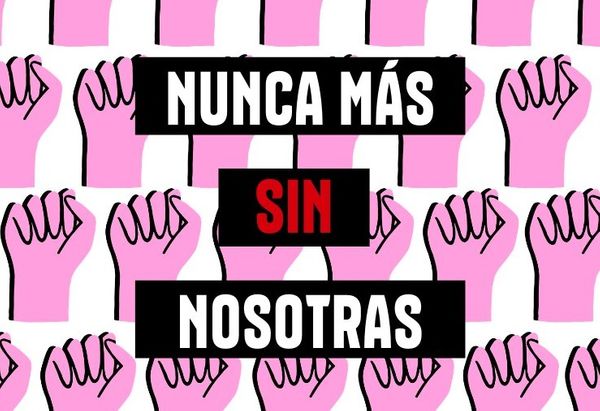Canada 32 years after the École Polytechnique Massacre - by Camille Saunders
TW: mention of domestic violence, non-explicit
Fourteen beams of light, one for each victim of the École Polytechnique Massacre, was shone into the sky above Mount Royal in Quebec on Monday night, commemorating the anti-feminist mass shooting of the 6thof December 1989.
Having entered the École Polytechnique de Montréal, the gunman ordered the men and women in the school to stand on either side of their classrooms, for him to target specifically the female students, killing 14, injuring 10 more, and ordering the male students to leave.
Just over three decades later, Canada’s gun control laws and internationally renowned progress towards gender equality has meant that the horror has not been repeated, though nor has it been forgotten. President Justin Trudeau, the Premier of the Quebec government François Legault, and the Mayor of Montreal Valérie Plante were among those commemorating at the university, showing that the tragedy is still prominent in national memory.
One of the survivors, Nathalie Provost, was shot four times during the massacre and has since dedicated her life to public service in honour of her fallen peers. She says, “Commemoration or not, political events or not, I will never forget that day. I am made of that day.”[1]Her message to women at the time, “Don’t be afraid”, is still remembered by current engineering professor at the Polytechnique, Sarah Dorner, who cannot help but think of the attack while teaching in that same classroom, and Clementine Lesec, a current representative of the Polytechnique’s Student Union, showing that the legacy of these victims lives on.
However, apart from mourning the loss of these women and laying white flowers in remembrance, has Canada ensured safety for women since the attacks?
According to an inquiry by Statistics Canada released in 2021 , 44% of women experienced some form intimate partner violence (IPV), and a previous inquiry in 2019 showed that a femicide is committed approximately every six days across the country. While domestic violence against women does not always result in a homicide, the psychological impacts can last a lifetime. Furthermore, gaining independence from an abusive spouse or partner can be made even harder not just from an emotional perspective, but also because the repercussions on survivors’ work lives can make financial independence almost impossible to achieve. For example, a study in Jennifer MacGregor, Nadine Wathen and Barbara MacQuarrie’s article, “Domestic Violence in the Canadian Workplace: Are Coworkers Aware?” for Safety and Health at Work magazine in 2016 , 53% of domestic violence victims said that at least type of abusive act happened at or near the workplace. 40% of victims said the abuse made it harder to get a job, and nearly 10% said they had lost their job as a result of this violence.
While these statistics are generally comparable to those of most economically developed countries, Canada also has a more unique position of having a large contingency from indigenous backgrounds. These communities have faced such discrimination in the past that they are often isolated from the rest of the Canadian population geographically and socially, and discrimination in employment, healthcare and policing has led to extreme poverty in many of these communities. The Canadian Women’s Foundation has highlighted many statistics and surveys pointing to the feminist impacts of this separation and how this in turn puts indigenous women at a higher risk than other Canadian women. For example, according to the National Inquiry into Missing and Murdered Indigenous Women and Girls, they are 12 times more likely to be murdered or missing than any other women in Canada . The Centre for Research and Education on Violence Against Women and Children also report that rates of intimate partner violence experienced by rural women are 75% higher than for urban women . This impact can even be seen through a geographical barrier, as the same study shows that in the Northern regions of Canada, where most of these indigenous communities live, the rate of women and girls experiencing violent crime is four times higher than the rest of total population. Furthermore, this violence is more likely to result in severe injury.
This points to a serious social injustice against indigenous groups, and women are bearing the worst of these impacts. Therefore, the Canadian government should be turning its attention not only to surveys and inquiries by official and independent groups, but also on how to actively bridge this gap. An increase in state-funded safe houses in affected areas could result in fewer injuries becoming life-threatening, as well as giving victim-survivors a chance to rest and consider their next steps, such as reporting to the police or moving away from home. Furthermore, distribution of police stations in areas more affected by gender-based violence could make women feel more reassured that they had somewhere to turn to, and specialised training of police officers, especially male police officers, in dealing with trauma victims, victims of violence by men, and in the potential cultural implications of communicating with indigenous groups effectively and respectfully, could ensure victims felt more comfortable filing a report in these police stations.
Trudeau stated to the press at yesterday’s vigil that “as we remember the victims of this hateful, cowardly act, we are also reminded that, for countless women, girls, and gender diverse people in Canada and around the world, violence is a daily reality”: it is therefore crucial that Trudeau apply this sentiment to all the women of Canada that he represents. So while politicians and civilians alike lay a white flower for the victims of the École Polytechnique Massacre of 1989, it important that they do not forget their responsibility to protect today’s women from gender-based violence, not just in urban Canada, but especially in indigenous and rural communities.
by Camille Saunders
Photo credits: Wikipedia, École Polytechnique massacre
[1] “Tributes for victims of École Polytechnique shooting on 32nd anniversary”, Virginie Ann, The Canadian Press, Global News Canada, 6th December 2021
[2] “Intimate Partner Violence in Canada, 2018”, Statistics Canada
[3] “Homicide in Canada in 2018”, Statistics Canada
[4] “Domestic Violence in the Canadian Workplace: Are Coworkers Aware?”, Jennifer MacGregor, Nadine Wathen and Barbara MacQuarrie’s article, ‘Safety and Health at Work’, 2016
[5] “Reclaiming Power and Place”, ‘National Inquiry into Missing and Murdered Indigenous Women and Girls’, Vol. 1a
[6] “Family violence in Canada: A statistical profile, 2019”, Shana Conroy, Canadian Centre for Justice and Community Safety, 2nd March, 2021




